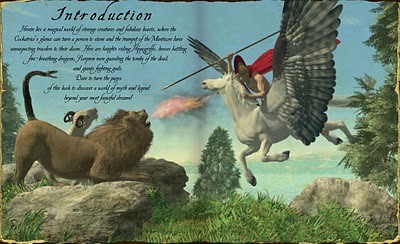Mythical creatures have captivated the human imagination for millennia. From fire-breathing dragons to graceful unicorns, these beings populate our stories, art, and dreams. This guide delves into the fascinating world of mythical creatures, exploring their origins, characteristics, and cultural significance.
Dragons, Serpents, and Wyrms: Masters of the Skies and Earth
Perhaps the most iconic of all mythical creatures, dragons appear in diverse forms across numerous cultures. In Western lore, dragons are often depicted as fearsome, winged reptiles hoarding treasure and breathing fire. Think of Smaug from The Hobbit or the dragons encountered in Game of Thrones.
Eastern dragons, however, are often benevolent symbols of power, wisdom, and good fortune, like the revered Chinese Lung dragons. Serpents, often wingless, are also prominent in mythology, representing chaos, healing, or primordial power. The Norse Midgard Serpent, Jormungandr, is a prime example, encircling the world and signifying its eventual destruction. Wyrms, a more archaic term, often refer to legless dragons or serpents with particularly malevolent natures.
Avian Wonders: Exploring Mythical Flying Creatures
The skies are also home to a myriad of mythical creatures. The phoenix, a bird consumed by fire only to rise from its ashes, symbolizes rebirth and immortality.
Griffins, with the body of a lion and the head and wings of an eagle, are majestic guardians of treasure and knowledge. In some cultures, winged horses like Pegasus represent inspiration and divine intervention. Harpies, with the bodies of birds and the faces of women, often symbolize destructive winds or divine punishment.
Chimeras: A Fusion of Forms
Chimeras, creatures composed of disparate animal parts, represent the blending of natural forces and the potential for both creation and destruction. The Greek Chimera, with the head of a lion, the body of a goat, and the tail of a serpent, is a classic example of a hybrid monster. Other notable chimeras include the Sphinx, with the body of a lion and the head of a human, posing riddles to travelers.
Half-Human, Half-Beast: Bridging the Gap
These creatures blur the line between humanity and the animal kingdom, exploring themes of duality and transformation. Centaurs, with the upper body of a human and the lower body of a horse, represent the conflict between reason and instinct. Minotaurs, with the head of a bull and the body of a man, symbolize monstrous appetite and confinement. Sirens, often depicted as half-woman, half-bird, lure sailors to their doom with enchanting songs.
Water Beasts: Denizens of the Deep
The oceans and lakes are teeming with their own unique brand of mythical creatures. Leviathans, colossal sea monsters, embody the untamed power of the ocean. Mermaids, with the upper body of a woman and the tail of a fish, represent allure and mystery. The Loch Ness Monster, a cryptid rumored to inhabit the Scottish Loch Ness, has captivated the public imagination for decades.
Giants: Titans of Legend
Giants, beings of immense size and strength, often represent primal forces or challenges to the established order. In Greek mythology, the Titans were a race of powerful giants who ruled before the Olympian gods. Norse mythology features frost giants and fire giants, who play a significant role in Ragnarok, the end of the world.
Shape-Shifters: Masters of Disguise
Shape-shifters possess the ability to alter their physical form, embodying themes of deception, transformation, and hidden identity. Werewolves, humans who transform into wolves under the full moon, represent the untamed animalistic nature within us. Selkies, creatures who can transform from seals into humans, explore themes of longing and connection to the sea.
Demons, Ghouls, and Ghosts: Inhabitants of the Shadow Realm
These supernatural entities represent the darker aspects of the human experience, such as fear, death, and the unknown. Demons, malevolent spirits, often tempt humans towards evil. Ghouls, creatures that feed on corpses, embody decay and corruption. Ghosts, the spirits of the deceased, may linger in the world to haunt the living or seek resolution.
Conclusion: The Enduring Power of Myth
Mythical creatures continue to fascinate and inspire us, offering insights into our deepest fears, hopes, and dreams. By exploring these fantastical beings, we gain a better understanding of ourselves and the cultures that created them. They remind us of the power of imagination and the enduring human need to tell stories. So, delve into the lore, explore the legends, and discover the magic that awaits within the world of mythical creatures.
